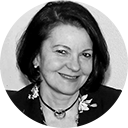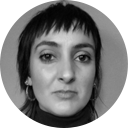“Les Faces cachées des Amériques”
Colloque international, 22-23 Mars 2018
Université Bretagne Sud, Lorient. Co-organisé par HCTI (UBS), 3L.AM (Le Mans) and MIMMOC (Poitiers), France
Appel à communications
Dans sa célèbre nouvelle, La lettre volée, Edgar Allan Poe montre que pour cacher un objet, la meilleure stratégie peut être de le mettre en évidence dans un endroit où l’on ne pense pas à regarder. S’interroger sur les faces cachées des Amériques s’inscrit ainsi à l’opposé d’une approche complotiste ; il s’agit de mettre au centre des recherches des objets soit mal connus soit minorés, soit oubliés, soit inattendus. Ainsi, aux États-Unis, l’écrivain noir Ralph Ellison a publié en 1952 un roman intitulé L’Homme invisible pour aborder l’exclusion des Afro-Américains. Ce roman s’intéressait à une face cachée, mais pourtant bien réelle, en plein cœur d’une société et d’un pays.
Michael Harrington parlait, au début des années 1960, de L’Autre Amérique dans son étude sur les pauvres ; il présentait ainsi à ses compatriotes une face cachée de leur pays. Les marginaux et les exclus sont bien évidemment l’une des faces cachées des Amériques. Travailler sur les inégalités est une façon de faire émerger une face cachée dans l’espace médiatique qui détermine souvent les sujets abordés dans l’espace politique. De la même manière, avec la récente élection de Donald Trump, un néophyte en politique et un iconoclaste, même aux yeux du Parti républicain, à la présidence des États-Unis, le pays a choisi de faire un saut dans l’inconnu pour mettre en lumière des faces obscures, voire obscurantistes, jusque-là cachées, aux conséquences imprévisibles. On peut aussi étudier la face cachée du processus électoral états-unien qui prive des citoyens de leur droit de vote, permet des sources de financement « cachées » ou obscures et autorise un lobbying direct et indirect, qui échappe à toute réglementation fédérale en toute légalité.
De la même façon, on pourra étudier le sort des Indiens en Amazonie ou au Pérou ou encore les processus de privatisation des grandes entreprises publiques ces dernières années, la sous-traitance, les fusions, la flexibilisation du travail et la répression qui font rage en Colombie malgré l’impression donnée que le « pays va mieux ». De la même manière on pourra mettre l’accent sur ce que cachent la coupe du monde de football ou les jeux olympiques au Brésil, dans un pays où la police militaire a chassé les habitants des favelas de Rio pour construire des installations sportives et par ailleurs financer la Fédération Internationale de Football (FIFA) ou le Comité International Olympique (CIO). On pourra aussi s’interroger sur les forces, elles-mêmes corrompues, qui ont conduit à la destitution de la présidente légitimement élue, dans des conditions problématiques dont on peut dire qu’elles s’apparentent à un coup d’état.
L’exposition de photographes chiliens qui eut lieu en avril 2016 à la Maison de l’Amérique latine à Paris, intitulée « Faces cachées : Photographie chilienne, 1980-2015 » présentait ainsi des photographes à la recherche de ce que l’on ne veut pas voir, qui n’est plus ou a disparu. Les images semblent ainsi capter l’interdit, le lointain, l’insaisissable en même temps que la résistance à l’ordre établi et un attachement profond à ces communautés « invisibles » qui peuplent leur pays. Il apparaît que les arts en tant que systèmes symboliques spécifiques qui contribuent à l’accroissement de nos capacités de perception et de connaissance peuvent être une source privilégiée pour mettre au jour les faces cachées des Amériques.
Ainsi, il pourra s’agir de mettre en lumière un système social, politique et/ou religieux qui remet en cause l’idée même de terre promise, de Nouveau Monde, que les Amériques sont censées incarner. Terres d’immigration, de multiculturalisme et de tolérance notamment quand on les compare aux pays de l’Ancien Monde, les nations américaines représentent des exemples de démocratie et d’opportunités, dans la conscience collective. Mais face à la réalité, qu’elle soit historique ou contemporaine, cette idée de Nouveau Monde ne cache t-elle pas une réalité plus sombre ?
C’est dans cette recherche d’une « autre » Amérique que se place ce colloque sur les Faces cachées des Amériques, dans une tentative de lever le voile sur les coins d’ombres de lieux oubliés, camouflés mais bien vivants. Mettre à jour les paradoxes, les éléments inattendus, pour mieux comprendre ce que sont les Amériques. Ce colloque peut donc se concevoir comme la révélation de faces cachées tant en sciences sociales, en histoire qu’en études littéraires, en arts visuels ou en philosophie, en anthropologie ou en linguistique.
Les propositions de communication sont à envoyer à , et avant le 16 juin 2017. Les réponses seront communiquées pour le 7 juillet 2017.
Les communications pourront se faire en français, en espagnol ou en anglais. Les publications se feront en français et en anglais.
“The Hidden Faces of the Americas”
International Conference
March 22-23, 2018
Université Bretagne Sud, Lorient
Co-organized by HCTI (UBS), 3L.AM (Le Mans) and MIMMOC (Poitiers), France
Call for Papers
In his renowned short story, The Purloined letter, Edgar Allen Poe suggests that the finest strategy to hide an object is perhaps to put it in a conspicuous place where one would never expect to locate it. Questioning the hidden faces of the Americas is all but a conspirationist approach. The aim of our research is to focus on phenomena that are either little known, underestimated, forgotten or unexpected. In the US, the black writer Ralph Ellison published a novel entitled, The Invisible Man in 1952, to tackle the issue of the exclusion of African-Americans. Notwithstanding the genuine edge of this novel, it investigates a hidden side at the heart of the American society.
While researching in the field of poverty back in the early 1960s, in his study on the poor, Michael Harrington spoke about The Other America. Harrington unveils to his fellow Americans the concealed side of their country. The excluded and the marginalized do in fact constitute one of the obvious hidden faces of the Americas. In addition, studying the issue of inequality is also a way of revealing one of the hidden faces of media coverage which has a national agenda setting function. With the recent election of the iconoclast Donald Trump, a candidate largely known, even among his fellow Republicans, for his lack of government experience, the US has chosen to make a leap into the unknown. This major political event highlights the shadowy, or even obscurantist sides of the US, the consequences of which are all but predictable. The concealed face of the American electoral process which deprives an increasing number of citizens of their right to vote, opens the door to “hidden” or obscure sources of campaign financing. This phenomenon allows a system of direct and indirect lobbying to thrive “legally” outside the federal regulatory framework. All that constitutes other relevant venues of research.
In the same vein, and in the economic, anthropological and social fields, studies on the fate of the Amazon Indians or those of Peru, the privatization of public companies, subcontracting, mergers and work flexibilization policies, as well as the repression taking place in Colombia in spite of the widespread idea that the country “is better off”, are interesting areas of research. We could also focus on the hidden side of major world sports events like the organization of the Football World Cup or of the Olympic games in Brazil where the military police expelled the inhabitants of the favelas of Rio de Janeiro to build sport facilities and finance the International Football Federation (FIFA) or the International Olympic Committee (IOC). Still in Latin America, we could also examine the removal of a democratically elected president, in a very questionable way, by hardly democratic forces which are far from being exempt of political corruption – the whole episode amounting to a “legal” coup d’état.
The exhibition of Chilean photographers which took place in April 2016, at La Maison de l’Amérique in Paris, entitled “Hidden faces: Chilean Photography, 1980-2015” presents photographers who are looking for phenomena that their society refuses to see, that faded away or disappeared. The works exhibited attempt to grasp the forbidden, the distant, the elusive, as well as the resistance to the established order and a profound attachment to those “invisible” communities who live in their country. Arts as specific symbolic systems which expand our capacities of perception and knowledge, could constitute a privileged source to deal with the hidden faces of the Americas.
The aim is also to focus on social, political and religious systems which call into question the very idea of the Promised Land, of the New World, that the Americas are supposed to embody. As lands of immigration, multiculturalism, and tolerance compared to countries of the Old World, the American nations are supposed to represent – in our collective consciousness – models of democracy and equal opportunities. However, faced with the reality, whether historical or contemporary, doesn’t the idea of New World hide a darker reality?
It is in this perspective – the study of the “other” America – that the conference, The Hidden Faces of the Americas, will attempt to shed light on the dark corners and forgotten sides, which are concealed but genuinely present. The conference will attempt to highlight the paradoxes, and the unexpected elements, that can lead to a better understanding of the Americas and to “reveal” its hidden faces in a variety of fields of social sciences as well as in literature, visual arts, philosophy or linguistics.
Please send your proposals to , and before June 16, 2017. Answers will be given by July 7, 2017.
The conference accepts papers in French, English and Spanish. The papers selected after peer-review will be published in French or in English.
|


















